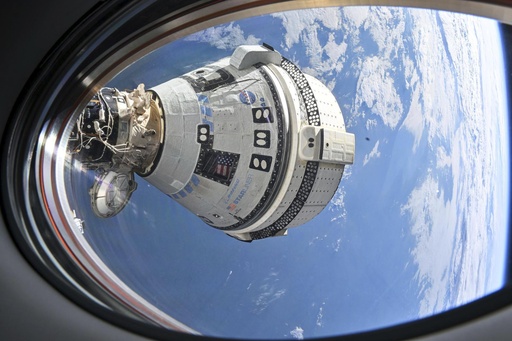CAPE CANAVERAL, Fla. — Last June, Butch Wilmore and Suni Williams embarked on a seemingly straightforward mission aboard Boeing’s Starliner capsule, unnoticed by the general public. However, as nine months passed, they became a focal point for many as they found themselves in an unprecedented situation as stranded NASA astronauts.
Their return is on the horizon with a new crew having reached the International Space Station (ISS) to take their place following a launch from Florida the previous week. They are set for a ride back to Earth aboard a SpaceX capsule, as the problem-laden Starliner that initially carried them, returned to Earth months earlier, leaving them behind on the ISS. The SpaceX capsule detached from the station early Tuesday, marking the start of a 17-hour journey back home.
A closer look at Wilmore and Williams reveals their deep-rooted backgrounds. Both hailing from the Navy, Wilmore and Williams have years of service and impressive records. At 62, Wilmore, originally from Tennessee, boasts 663 successful aircraft carrier landings and was also a football player in high school and college. Suni Williams, aged 59, comes from Needham, Massachusetts, where she was a competitive swimmer and distance runner, and she has served in combat helicopter squads.
Their journeys brought them to NASA, where Williams joined in 1998, followed by Wilmore in 2000. Both have considerable experience, having each completed two spaceflights, including extended stays on the ISS, prior to becoming the first crew of the Starliner. While they’ve taken the delays in stride, the impact on their families has been significant. Wilmore’s wife, Deanna, has managed the home front, while Williams’ husband, Mike, retired from his role as a federal marshal and has been looking after their dogs.
Eager to return to Earth, Wilmore looks forward to resuming face-to-face interactions as a church elder and enjoying the simple pleasure of fresh-cut grass. He maintained communication with his church congregation during his time in space, participating in prayer services and making calls over the space station internet. Williams, on the other hand, longs for the opportunity to walk her dogs and swim in the ocean.
Although extended stays in space aren’t uncommon for astronauts, their mission became politically charged when former President Donald Trump and SpaceX’s Elon Musk made headlines by blaming the prolonged mission on the current administration. Despite these tensions, NASA decided to wait for the subsequent SpaceX flight for their return, initially planned for February. However, delays occurred due to battery issues with the new SpaceX capsule, causing further adjustments.
In response, SpaceX adjusted plans and accelerated their return by a few weeks. The astronauts left the station in the capsule that has been there since the previous fall, with Williams sending heartfelt farewells to the remaining crew. Ken Bowersox, NASA’s mission chief, praised them as “professional, devoted, committed, really outstanding.”
Traditionally, astronauts return in the same spacecraft in which they arrive, but Wilmore and Williams switched from Boeing’s Starliner to SpaceX’s Dragon. While the Starliner faced equipment failures, including helium leaks and malfunctioning thrusters during its journey to the ISS, NASA, and Boeing worked to repair and understand these challenges over the summer, ultimately instructing an unmanned return due to potential risks.
As investigations into the Starliner’s issues continue, the future of the craft is uncertain, with no clear timeline for the resumption of flights, whether they’ll be with astronauts or solely cargo. NASA remains committed to the commercial crew program, valuing competition between U.S. companies to ensure reliable space travel options.



